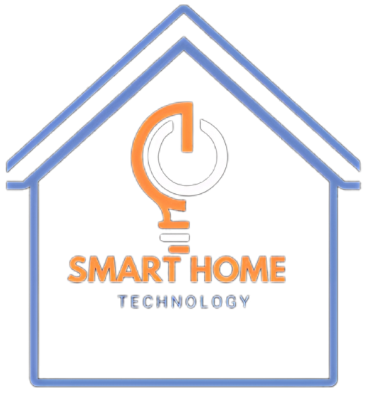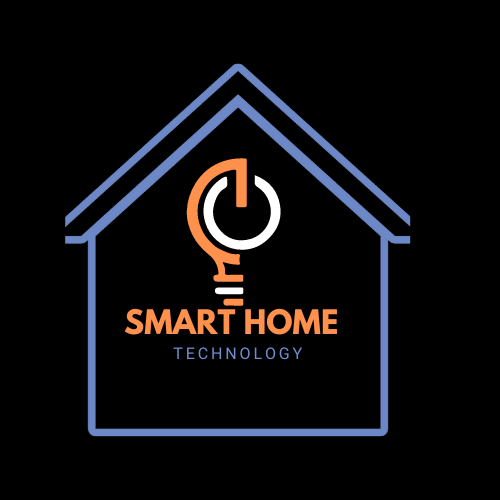
Table of Contents
What can smart homes do to improve our daily lives? Over 40% of US families now own at least one smart gadget, indicating that the smart home trend is here to stay. Smart houses integrate technology into everyday life, providing ease, security, and energy efficiency. The possibilities are endless, from remotely managing lighting and temperature to improving home security with cameras and alarm systems.
In this article, we’ll examine what smart homes can achieve, from enhancing comfort and safety to optimizing energy consumption, and give you a glimpse into the future of home living.
What is a Smart Home?
A smart house incorporates technology into the daily operations of the home. These devices, linked via the Internet of Things (IoT), communicate with one another, resulting in a seamless system that makes life easier, more efficient, and safer.
A smart house has internet-connected gadgets for automation, control, and monitoring. Residents may control their home environment—from lighting and temperature to security systems—using cell phones, voice commands, or programmed schedules. Statista predicts the worldwide smart home industry will be worth $79.16 billion by 2025, driven by demand for home automation and energy-efficient gadgets.
Basic Concepts of IoT
The Internet of Things (IoT) is essential in a smart home. It links ordinary equipment such as smart home security cameras, thermostats, and refrigerators to the Internet, allowing for remote monitoring, real-time control, and energy management.
Benefits of Smart Homes
Smart home technology is transforming our lives, providing convenience, energy efficiency, increased security, and cost savings. These advances are changing regular houses into automated, intelligent environments. According to a 2023 analysis by Statista, more than 35% of US houses have adopted some type of smart home technology.
Let’s look at the benefits of using smart home gadgets.
- Convenience: Making Daily Tasks Easier
One of the most notable advantages of smart homes is their convenience. House automation lets you control your house using a simple voice command or smartphone. Smart devices make turning on lights, adjusting the thermostat, and locking doors easier. Imagine returning home from a long day and instructing your home to change the temperature, play your favorite music, and dim the lights—all hands-free.
Photograph: Freepik
- Energy Efficiency: Saving Power and Money
Energy-efficient, smart homes are the future of sustainability. Smart thermostats, lighting systems, and HVAC controls improve your home’s energy efficiency. Smart home gadgets, such as Nest thermostats, can adjust your schedule and heating or cooling accordingly, ensuring energy is not wasted while you are not present. Studies have shown that smart thermostats can reduce heating and cooling expenditures by 10-12% and 15%, respectively.
- Smart Home Security: Enhanced Protection
Security is a primary consideration for homeowners, and smart homes include advanced security systems such as cameras, motion detectors, and smart locks. These systems send real-time warnings to your phone, providing peace of mind whether you’re at work or on vacation. You can simulate your presence by remotely locking doors, monitoring camera feeds, and controlling lighting.
- Cost Savings: Long-Term Benefits
The long-term benefits of energy efficiency and home automation are enormous. You may reduce your utility expenses by employing energy-efficient smart homes and minimizing energy consumption. Furthermore, smart home security can eliminate the need for pricey systems while preventing costly break-ins.
- Remote Access: Control from Anywhere
Remote access is another game changer. Using your smartphone or voice assistant, you can monitor and control your house from almost anywhere. This feature provides additional convenience and flexibility, ensuring that your house is always under control, even when you are not physically present.
Popular Smart Home Devices: Enhancing Comfort and Security

Smart home technology has transformed our lives, making our houses more efficient, secure, and comfortable. Connecting multiple gadgets makes home automation more seamless and streamlines ordinary tasks.
Here’s a look at some popular smart home devices that are transforming households around the world:
- Smart Thermostats: The Benefits of Automated Temperature Control
Nest and Ecobee devices are simplifying home temperature management. These smart thermostats can help you when you’re home and away, allowing them to optimize energy usage based on your behaviors.
Energy Savings: According to studies, smart thermostats can save up to 15% on energy expenses.
Convenience: You can control the temperature remotely from your phone, even while you’re not home.
- Smart Lighting: How Smart Bulbs, Switches, and Automation Work
Smart lighting systems, such as Philips Hue, allow you to set the mood with a simple voice command or a tap of your phone. You can change the brightness, color, and timing for various spaces and scenarios.
Customizable Atmosphere: Set the lights to dim for movie night or bright for reading.
Energy Efficient: Save power by automatically switching lights off when not in use.
- Smart Plugs and Appliances: Making Ordinary Appliances Smarter
Smart plugs, for example, enable you to integrate everyday items into your automated system. You can operate them remotely or schedule their use.
Convenience: Start your coffee machine from your phone in the morning.
Energy Efficiency: Keep track of your power usage and prevent leaving equipment turned on when they aren’t needed.
- Smart Speakers and Assistants:
Popular devices include Amazon Echo and Google Home. Smart speakers serve as the central centers of smart homes. These gadgets use voice commands to operate other smart devices, play music, and provide real-time information.
Hands-Free Control: Control your home’s automation without moving a finger.
Integration: Compatible with other smart home devices, providing comprehensive control.
- Smart Cameras and Doorbells: Enhancing Home Security
Smart security solutions, such as Ring and Nest Cam, provide a new degree of protection by allowing you to watch your house remotely.
24/7 surveillance: Get real-time alerts when motion is detected.
Peace of Mind: Monitor your home from anywhere in the world.
These smart home technologies make creating an energy-efficient, secure, and comfortable living area easier. These technologies not only increase convenience but also help to minimize energy usage and improve home security. As more devices integrate into home automation systems, the possibilities for enhancing your house become limitless.
How Smart Homes Improve Home Security

Smart home technology has transformed the way we approach home security. With home automation improvements, homeowners may combine a wide range of smart home gadgets to improve security, convenience, and peace of mind. These gadgets work together seamlessly to provide a safe and secure environment at home and out.
- Integrating surveillance cameras, sensors, and alarms
Smart home security is built on integrating surveillance cameras, motion sensors, and alarm systems. High-definition cameras in key areas provide live views, while motion detectors notify you if unusual activity is detected.
Research conducted by the National Council for Home Safety and Security found that homes with security systems are 300% less likely to be targeted by burglars. Alarms are linked to the system, alerting householders promptly in case of a breach. These gadgets connect to smartphone apps, allowing you to monitor your property remotely.
- Real-time Alerting and Monitoring from Anywhere
Smart home security allows you to receive real-time notifications directly on your smartphone. These devices keep you connected at work, traveling, or away from home. Automated systems notify users of unexpected activity, temperature changes, or potential threats.
3. Enhancing Home Protection When Away
Smart home security systems increase security by replicating your presence. Smart lights and locks, for example, can be programmed to turn on while you are not there, deterring criminals who may target unoccupied homes.
By combining energy-efficient smart homes into your system, you can secure your home and reduce your energy consumption. Smart home security is more than peace of mind; it creates a more integrated, safer, and efficient living environment.
Energy Efficiency and Smart Homes: Harnessing Technology for Savings
Smart home technology is transforming how we manage our energy consumption by providing an intelligent approach to monitor and change usage in real time. With the rise of home automation, homeowners may now cut energy waste and save significantly by utilizing smart devices and integrated systems.
Here’s how smart technology can increase energy efficiency:
- Smart thermostats: Devices such as the Nest Thermostat learn your schedule and preferences, adjusting the temperature to save energy while you’re away. According to Energy Star, households with smart thermostats can save up to 10-12% on heating and 15% on cooling costs yearly.
- Lighting: Smart bulbs and switches, such as those from Philips Hue, enable users to control lights remotely, create timers, and use motion sensors to ensure lights are only turned on when needed. This helps to reduce electricity waste.
- Energy-Efficient Smart Appliances: Smart appliances such as washing machines, refrigerators, and ovens may optimize their energy use depending on your usage patterns, resulting in lower electricity consumption.
Case Studies of Successful Energy-Efficient Smart Homes
The Smith Family’s Smart Home: By integrating smart thermostats, lighting, and appliances, the Smiths cut their energy consumption by 30%, saving hundreds of dollars annually.
The Johnson Residence: Using a comprehensive suite of smart gadgets, including security and energy-saving features, the Johnsons saved 25% on monthly electricity expenses.
Adopting energy-efficient smart homes improves your home’s sustainability and gives you more control over your energy bills. Whether through automation or smart home security integration, these products contribute to a more environmentally friendly and cost-effective living environment.
Smart Homes for the Future: Trends, Innovations, and Sustainability
Smart home technology has drastically changed how we interact with our living spaces. With AI integration, enhanced voice control, and ever-expanding capabilities, smart homes will provide ever more smooth and efficient living experiences. The worldwide smart home market is expected to grow to $53.45 billion by 2025, demonstrating the fast acceptance of these technologies.
These advancements have numerous benefits, from ease and automation to sustainability and energy efficiency.
Upcoming Trends and Innovations in Smart Home Technology
AI-Powered Automation – AI transforms smart home devices by learning from your actions and adapting to your needs. Consider a home that adjusts its temperature based on your daily routine or lighting that changes with the time of day.
Advanced Voice management – Voice assistants like Alexa and Google Assistant are getting more intuitive, allowing users to manage everything from lighting to security systems using simple commands. Future models will support many languages and even emotional recognition.
Smart Home Security – Smart home security advances alongside technological advancements. Advanced cameras and sensors linked with AI will alert you to intrusions and identify prospective dangers based on behavioral patterns.
Future Possibilities for Smart Homes: Sustainability and Convenience
- Energy Efficient Smart Homes:
The combination of smart thermostats, energy-efficient appliances, and solar panel control systems is paving the way for technologically advanced and environmentally conscious homes. These dwellings use less energy, making them more sustainable and cost-effective.
- Home Automation for Convenience:
Smart home automation will continue to boost convenience, such as smart refrigerators that refill your groceries or smart windows that change based on the outside temperature.
Evolving Smart Homes
As the Internet of Things (IoT) increases, so will the opportunities for home automation. Future homes could include automated kitchens, seamless energy management systems, and integrated entertainment hubs. Smart home technology is growing, and the future presents tremendous opportunities for smarter, safer, and more sustainable living.
FAQs
How can a smart home help with daily tasks?
Smart homes automate operations like as lighting adjustment, temperature management, and appliance control, saving time and effort.
Do smart homes enhance energy efficiency?
Yes, smart thermostats, lights, and energy management systems optimize utilization, minimizing waste and utility costs.
How can smart houses improve security?
Smart cameras, doorbells, and motion sensors offer real-time monitoring, warnings, and remote access to boost security.
Can a smart home adapt to personal preferences?
Absolutely! AI-powered systems learn habits and preferences, customizing lighting, music, and temperature to fit your lifestyle.
Are smart homes suitable for families?
Yes, they offer convenience, security, and features like parental controls, making them ideal for busy households.
Conclusion
The right smart home platform depends on your specific needs and preferences. Each platform offers unique advantages, from Amazon Alexa’s versatility to Google Home’s integration with Google services and Apple’s HomeKit’s focus on privacy. The possibilities are endless—enhanced convenience, security, and energy efficiency are just the beginning. As smart home technology evolves, embracing it can significantly improve your lifestyle and home management. Explore your options and find the best fit for your home.


